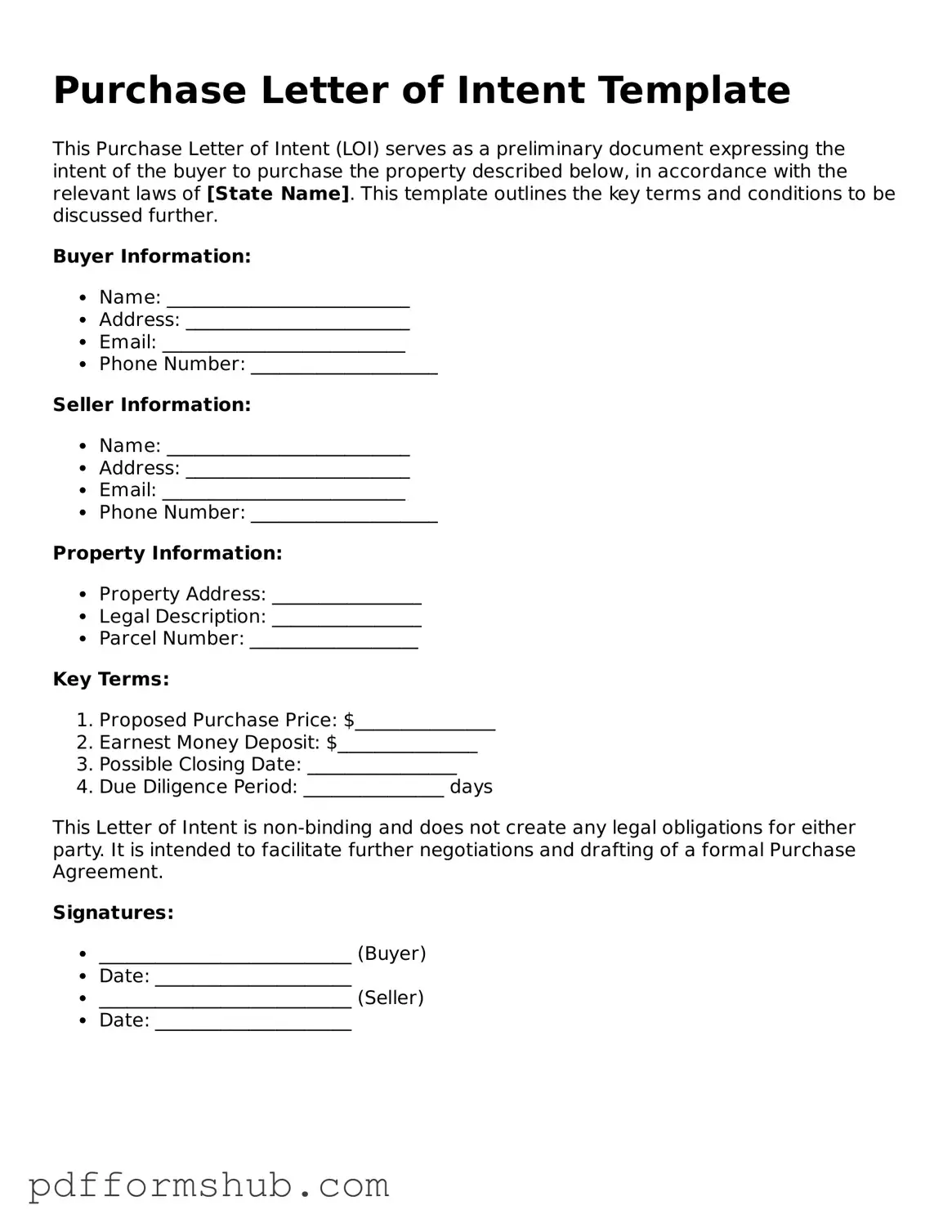Valid Purchase Letter of Intent Form
A Purchase Letter of Intent is a document that outlines the preliminary agreement between a buyer and a seller regarding the purchase of property or assets. This form serves as a roadmap for negotiations and sets the stage for a formal purchase agreement. Understanding its components is essential for both parties to ensure a smooth transaction.
Ready to get started? Fill out the form by clicking the button below.
Customize Form
